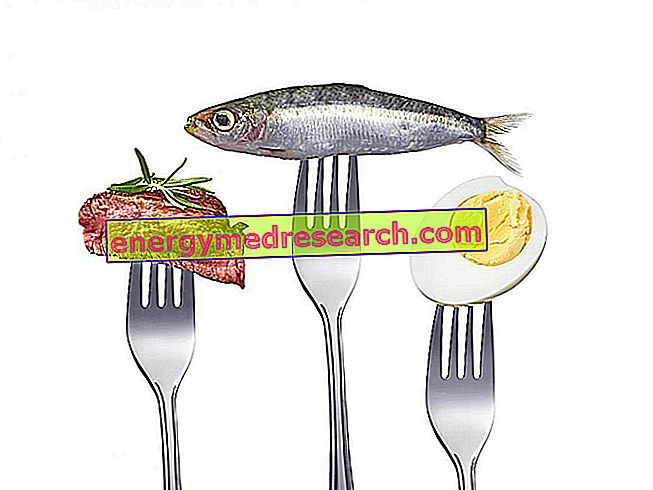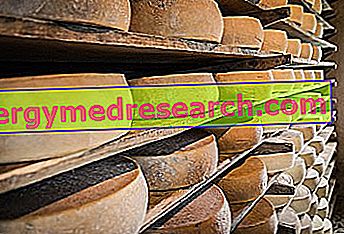Generality
The halibut is a flat fish that can reach considerable dimensions; it is typical of northern cold seas and its fishing is of fundamental importance for the economy of fish trade in various countries. The halibut meat is known for its relative thinness and digestibility, but not everyone appreciates its taste (rather delicate). In the Nordic countries, halibut is considered the quintessential fish food source.

The etymology of the term HALIBUT derives from the union of the Anglo-Saxon nouns haly, or better, holy (which means "holy") and butt (which means "flat"). In practice, halibut ( halybutt ) is a term that translates into "flat holy fish", a clear reference to its shape and the importance it has for banquets for Catholic religious holidays.
Description
The halibut is the largest of the flatfish discovered so far. The largest officially fished halibut weighed over 230kg, but the specimens around the quintal are not so rare.
The color of the halibut is brown on the upper side and white on the lower side, and its skin is completely covered with tiny scales. Throughout life, the halibut follows an extremely peculiar metamorphosis. The fish is born completely white and with one eye for each side of the body; not surprisingly, in this period he swims perpendicularly to the bottom. From the sixth month of life an eye migrates towards the opposite side and the halibut becomes more and more similar to the other Pleuronettids (such as sole); at the same time, the upper side of the body, the one that houses the migrating eye, turns brown and turns brown while the other remains white. This chromatic distribution allows a perfect camouflage both on the bottom (looking at it from above) and in mid-water (looking at it from below).
The halibut is a predator that feeds on almost all the animals present in the sea. From small catches of crustaceans and benthic organisms, while as an adult he devours octopus, crabs, salmon, hermit crabs, cods, herring, flounder, other halibut etc.
The "proper" halibut colonizes the entire northern part of the Atlantic Ocean and the Pacific Ocean. It lives at depths varying from a few tens to several hundred meters and, although it spends most of its time lying on the bottom, it is not uncommon for it to move vertically on the water column.
The natural predators of the medium-large halibut are: the halibut themselves, the killer whales, the sea lions and the salmon sharks.
Halibut fishing
Being a primary fish resource, halibut fishing is of great importance on the economy of northern countries.
The most exploited sites for halibut fishing are near Greenland, Alaska, Canada and Norway. The preferred systems are the longline and the longline, but it is not uncommon to use trawl nets which, on the other hand, seriously damage the ecosystem due to the annihilation of the fish colonies and to the significant damage to the integrity of the seabed marine.
Unfortunately, as with many other fish, the population density of the halibut has been drastically reduced with the application of intensive fishing. Specifically, at the North Atlantic Ocean, halibut can now be considered an endangered species.
- It is interesting to find that, in 2012, in the area of Cook Intel, there was a dramatic increase in the cases of "Halibut Molli Syndrome". This variation in consistency results in the fish's gelatinization of the fish which, however, seems perfectly perfectly edible. To date the causes are still unknown but it is possible that they are attributable to a change in the diet.
| Composition for: 100g of Halibut - Reference values of the INRAN Food Composition Tables | ||||||||||||||||||||||||||||||||||||||||||||||||||||||||||||||||||||||||||||||||||||||||||||||||||||||||||||||||||||||||||||||||||||||||||||
 | ||||||||||||||||||||||||||||||||||||||||||||||||||||||||||||||||||||||||||||||||||||||||||||||||||||||||||||||||||||||||||||||||||||||||||||
Nutritional values (per 100 g of edible portion)
| ||||||||||||||||||||||||||||||||||||||||||||||||||||||||||||||||||||||||||||||||||||||||||||||||||||||||||||||||||||||||||||||||||||||||||||
Gastronomic Aspects of the Halibut
The halibut is consumed mainly in fillets. These can be boiled, fried or grilled, while smoking is less recommendable due to the very low fat content of the meat. The halibut muscle tissue is white, has a firm consistency and a delicate, almost neutral taste.
The halibut has been a near-irreplaceable food source for Native Americans and the first Canadians. In the places it colonizes, in addition to supporting the economy, the halibut is an excellent source of entertainment for gastronomic tourism and sport fishing.
Nutritional Features
The halibut has a very lean, low-calorie, high-protein and carbohydrate-free meat. On the other hand, information on the chemical profile of peptides and fats is not yet well known.
It is likely to assume that all essential amino acids are present, in such quantities as to define a "high biological value" of the respective proteins.
Furthermore, the ratio of fatty acids is not at all clear; since it is a Nordic fish, it is possible that it has a good content of essential polyunsaturated fatty acids of the omega 3 group. On the other hand, with only 3.5g of total lipids per 100g of edible part, it is unlikely that halibut will be a source EXCLUSIVE of these essential lipids in the human diet.
The vitamin and salt profile still remain to be defined.
The halibut is a food that lends itself to any nutritional regime, except for some forms of hypersensitivity in any way related to the most common metabolic diseases.
The frequency of consumption of the halibut can be weekly (even twice), in portions that range from 150 to 300g (170-340kcal).



